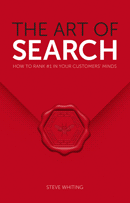

æ Sub@omic's Web Design Process Step 8:
Code
Web Design Process Step 8
Whilst content is being generated, Sub@omic turns the approved designs into webpages using bespoke HTML and CSS styling.
Pixel perfect
The speed of a Sub@omic website is almost entirely thanks to the quality HTML and CSS we write, by hand, line-by-line, for each and every website. Our prime objective when writing web page layout and styling code is to ensure that the approved web design is faithfully reproduced; what you see on the JPG proofs should be what you get on the screen.
Cross-browser performance
Sub@omic websites are designed to run across all web browsers and platforms so whether you run a Windows or a Linux PC, a Mac or a smartphone you should see the same great-looking website. Note that we say should and not will; each browser interprets and renders the HTML code we write slightly differently and may cause minor visual differences between different platforms. The cross-browser testing Sub@omic does means that the likelihood of such occurrences will be significantly reduced, if not eliminated.
Standards-compliant HTML & CSS
The basis for this confidence and belief is in writing web standards compliant, semantic, HTML. Sub@omic takes a great deal of pride in the cleanliness of the HTML we write; the neater the HTML is the easier it is to find bugs and to update code at some point in the future. Each and every web page may be validated against published worldwide standards issued by W3C.
Semantic HTML is the use of HTML markup to reinforce the semantics (the meaning) of the information in webpages rather than merely to define its presentation (look). In HTML the content of a page may be 'marked-up' so that a heading is identified (tagged) as a heading, a paragraph is identified as a paragraph, an image is identified as an image and so on; when written semantically the content on the page becomes information because it has 'meaning' and a clearly recognisable purpose.
The benefit?
When Googlebot visits a semantically written webpage then it has little difficulty understanding what the page in question is all about.

 Move Forward
Move Forward

